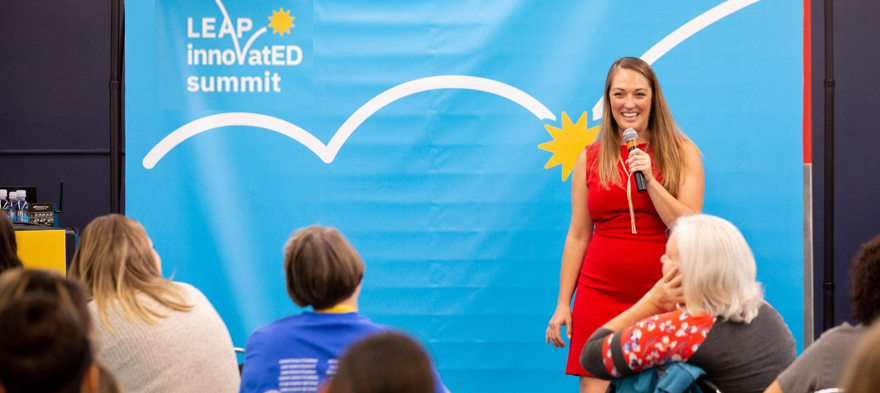
Fall has always been my favorite season. Having the opportunity to join hundreds of educators at the recent LEAP InnovatED Summit, just days before most students return to school, reminded me of exactly why. The fall holds hope and potential for the school year to come and the new relationships that will be built.
Teachers flooded into the conference room for my presentation, eager to enhance their own purpose statements about why they work in education, as well as to share their hopes for the upcoming school year. As teachers prepare for the journey ahead, students will arrive in their classrooms with backpacks full of their own life experiences—positive, negative and sometimes traumatic.
At Turnaround for Children, we work to ensure that educators realize the power they carry to be brain builders in children’s lives by showing them how context—the relationships, environments and experiences in a child’s life—shapes development. Supportive, buffering relationships with adults can prevent and even reverse the effects of traumatic experiences on learning.
We know that each child has limitless potential. By creating a safe and supportive environment, and by being attuned and responsive to each student’s individual, holistic needs, [pullquote]educators can play a critical role in students’ healthy development and learning.[/pullquote]
They can either reinforce a student’s past experiences with school, whether negative or positive, or they can unlock a new way of being and interacting with caring adults. It is an enormous responsibility, but intentional strategies and interactions can pave the way for meaningful teacher-student relationships.
Here are two quick and easy strategies educators can embrace to lay the foundation for truly transformational adult-student relationships. The first can be used with all students. The second is a strategy to be used with a student who might need additional support.
Journaling or Conversation Notebooks
Teachers use journaling in the classroom in a variety of ways that can support relationship building. Here are some ideas to spark your thinking:
The Secret Code
Remember that no matter a student’s start in life or the obstacles they may have faced, science tells us we can design schools and classrooms—starting with each educator—that nurture the development of the whole child. By doing this, we can unleash the potential in every child.
Amy Nicholson is Director of Integrated Program Strategy at Turnaround for Children, a nonprofit organization that translates the science of learning and development into tools, practices and systems for educators to help all students thrive, particularly children who have been impacted by adversity.
If you have a child with disabilities, you’re not alone: According to the latest data, over 7 million American schoolchildren — 14% of all students ages 3-21 — are classified as eligible for special...
The fight for educational equity has never been just about schools. The real North Star for this work is providing opportunities for each child to thrive into adulthood. This means that our advocacy...
The story you tell yourself about your own math ability tends to become true. This isn’t some Oprah aphorism about attracting what you want from the universe. Well, I guess it kind of is, but...
Your donations support the voices who challenge decision makers to provide the learning opportunities all children need to thrive.
Ed Post is the flagship website platform of brightbeam, a 501(c3) network of education activists and influencers demanding a better education and a brighter future for every child.
© 2020–2024 brightbeam. All rights reserved.